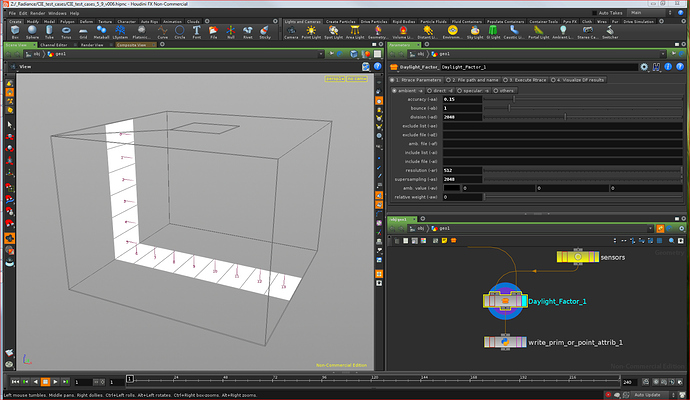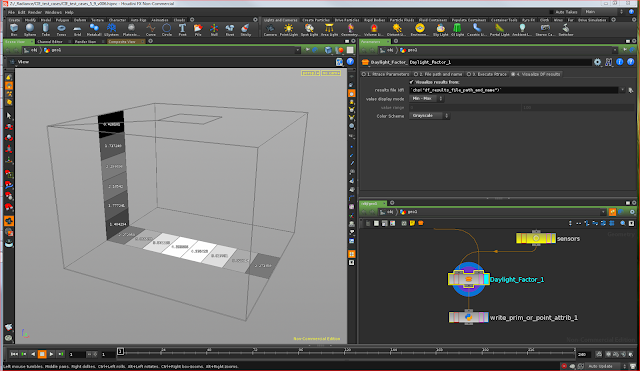My friend and fellow lighting software author, Ian Ashdown, gave me the following message for the Radiance community.
Ian is responsible for the creation and development of the AGi32 simulation engine, which is widely regarded in the lighting design community (for good reason). He has suggested that it would be a good idea for one or more persons to undertake a validation of Radiance based on CIE 171:2006, a suite of sample lighting scenes with known numerical solutions. I believe Radiance has been partially validated against this dataset. In particular, Mike Donn posted a request for more information with a couple of references to others' work along these lines in 2011:
http://www.radiance-online.org/pipermail/radiance-general/2011-September/008173.html
(Corrected links from post: <http://www.radiance-online.org/community/workshops/2008-fribourg/Content/Geisler-Moroder/RW2008_DGM_AD.pdf> and <http://www.ibpsa.org/proceedings/BS2011/P_1146.pdf>\)
I don't know of anyone who has gone through the entire CIE 171 test set, but this is what Ian proposes. Note that there are some tests to watch out for, and whoever works on this will probably be talking to me at multiple points. I look forward to learning something new in the conversation.
One way to approach this would be to set up a wiki or plone site where individuals could upload their validation tests and open them up for comments. This would require some public documentation of the CIE 171 tests, and this is where it all gets a bit fuzzy. I don't have this document and if we were to purchase it, I am uncertain as to the legality of sharing (portions of) it.
Ideas and further suggestions are welcome.
Cheers,
-Greg
From: "Ian Ashdown" <[email protected]>
Date: May 6, 2013 7:16:49 PM EDT
This is an academic challenge for the Radiance community.
Validation of lighting design and analysis software has been an issue within
the architectural lighting design community since the first commercial
programs were released in the 1980s. Several studies were performed for
physical spaces, the most notable being:
DiLaura, D. L., D. P. Igoe, P. G. Samara, and A. M. Smith. 1988.
“Verifying the Applicability of Computer Generated Pictures to Lighting
Design,” Journal of the Illuminating Engineering Society 17(1):36–61.
where the authors constructed and measured the proverbial empty rectangular
room while carefully monitoring and controlling photometer calibration,
ambient temperature, luminaire voltage, ballast-lamp photometric factors,
lamp burn-in and other light loss factors, surface reflectances, accurate
photometric data reports, and other issues.
Such studies are useful for interior lighting designs, but considerably less
so for daylight studies where it is nearly impossible to measure, let alone
control, the sky conditions.
They are also mostly pointless for complex spaces with occlusions and
non-diffuse reflective surfaces. Regardless of how carefully the room
parameters might be modeled and controlled, the results only apply to that
particular space.
The alternative is to develop a series of test cases with known analytic
solutions based on radiative flux transfer theory. This became the premise
for:
Maamari, F., M. Fontoynont, and N. Adra. 2006. “Application of the CIE
Test Cases to Assess the Accuracy of Lighting Computer Programs,” Energy and
Buildings 38:869-877.
and:
CIE 171:2006, “Test Cases to Assess the Accuracy of Lighting Computer
Programs.” Wein, Austria: Commission International de l’Eclairage.
At least lighting software companies, DIAL (www.dial.de) and Lighting
Analysts (www.agi32.com), validated their software products with respect to
CIE 171:2006. It does not appear however that anyone has done this for
Radiance.
As a Radiance community member, you may rightly ask, "Is this even
necessary?" Numerous studies have demonstrated the accuracy and reliability
of Radiance, which may rightly claim the title of being the gold standard
for lighting simulation software. (I am saying this as the Senior Research
Scientist for Lighting Analysts, by the way.)
My answer is yes, but not for the reasons you might think.
Lighting Analysts engaged an independent third party called Dau Design &
Consulting (www.dau.ca/ddci ) to perform the CIE 171 validation tests using
AGi32 in 2007. The full report is available here:
What was interesting about the tests was that AGi32 failed a number of them
on the first pass. As simple as they are, the results were dependent on such
things as the surface meshing parameters and convergence limits (for
radiosity calculations). Roughly equivalent parameters for ray tracing would
be the number of rays and the number of reflections.
It was easy enough to optimize the parameters obtain the best results, which
is what an experienced user would likely do anyhow for complex environments.
Note that I said "experienced user"; that is, someone who has learned by
trial and error what works best for a given software product. CIE 171:2006
has the potential (so far unrealized) of providing beginning users with a
cookbook of sorts to document and choose the best rendering parameters for
various situations. This alone would be valuable, but it becomes even more
useful when the user needs to work with two or more lighting simulation
programs and hopefully obtain similar results.
Validating AGi32 against CIE 171:2006 also led to a few puzzles where no
amount of parameter tweaking produced acceptable results. Further in-depth
analysis proved that the tests themselves were incorrect, being based in
invalid assumptions. These are documented in the report, but sadly CIE
Division 3 has not seen the need to issue an amendment to CIE 171. There are
at least also two other tests (5.13 and 5.14) that have been called into
question.
These issues notwithstanding, CIE 171:2006 is a useful document, which leads
to the academic challenge ...
Validation of Radiance against CIE 171:2006 involves more than just setting
up a few simple models and running the tests. There will undoubtedly be test
cases where the calculated results do not even begin to agree with the
published results. Optimizing the program parameters will demand an in-depth
understanding of what they actually mean and do, and so offer a valuable
learning experience for students doing for example a class project.
Digging deeper, there will likely be other issues with the test cases where
invalid assumptions lead to incorrect published results, subtle or
otherwise. Just because CIE 171:2006 was derived from a PhD thesis does not
mean that it is entirely correct. This, combined with proposals for more
rigorous and comprehensive tests, could form the basis for an interesting
MSc thesis. (The tests are mostly derived from radiative flux transfer
theory and as such are aimed at radiosity-based methods. If these are not
suitable for ray tracing methods, what would be reasonable equivalent
tests?)
Finally, it would alleviate a lot of angst regarding lighting software
validation in the architectural lighting design community if the major
commercial and open source products were validated against CIE 171:2006
(with acknowledgement that there are no overall pass/fail results). Ideally,
each company or software developer would conduct the tests in-house because
they know their products best. The catch here is that they would then be
expected to publicly post both the results and their test models so that
anyone could use their products to confirm the test results. This would
ensure that the test results remain valid as the products undergo continual
improvement.
In terms of Radiance, it could be a community effort, with various people
contributing test models and proposing best parameter settings. In addition
to providing a useful "best practices" guide for Radiance, this would likely
result in Radiance validating CIE 171:2006. It would also be welcomed as a
valuable contribution by the architectural lighting design community.
Ian Ashdown, P. Eng., FIES
President
byHeart Consultants Limited
http://www.helios32.com
···
Begin forwarded message:


